
Research Article
Austin J Environ Toxicol. 2021; 7(1): 1035.
Hybrid Nano-Composites by Deposition of Ag2WO4/ Carbon Nanotube: Efficient Biological Application
Akshatha G1,2*, Abhilash MR1,2*, Jagadish K3 and Srikantaswamy S1,2
¹Department of Studies in Environmental Science, University of Mysore, Manasagangotri, Mysore, India
²Centre for Materials Science and Technology, VijnanaBhavan, University of Mysore, Manasagangotri, Mysore, India
³Department of Studies in Chemistry, University of Mysore, Manasagangotri, Mysore, India *Contributed Equally to this Work
*Corresponding author: Akshatha G, Department of Studies in Environmental Science, University of Mysore, Manasagangotri, Mysore, India; Centre for Materials Science and Technology, VijnanaBhavan, University of Mysore, Manasagangotri, Mysore, India
Received: February 16, 2021; Accepted: March 09, 2021; Published: March 16, 2021
Abstract
For nearly a decade, researchers have debated pollution prevention to achieve a sustainable environment Recently, various nanoscale materials, including silver tungstate (Ag2WO4) nanoparticles, have been actively studied for their capacity to effectively prevent bacterial growth. A critical challenge is to enhance the antibacterial properties of nanomaterials while maintaining their biocompatibility. CNT is addressed in terms of sustainable environment and green technologies perspective, such as wastewater treatment, biocompatibility, photocatalytic and green nanocomposites. In this work, we built up a straightforward science strategy to combine Carbon Nanotubes (CNT) adorned with silver tungstate nanoparticles (Ag2WO4) utilizing various strategies. The synthesized nanocomposite is employed for the photocatalytic degradation of Rhodamine-B (RhB) in a single step which resolves organic dye contaminant issues with nontoxic molecular intermediates at the same time, removal of heavy metals. The development of Ag2WO4 with functionalized bunches on the outside of CNT was investigated by X-ray diffraction, TEM, EDS, XPS, The normal size of CNTAg 2WO4 was around 8.26nm with about uniform size appropriation. Antibacterial impact of CNT-Ag2WO4 nanocomposites was assessed against two of Gramnegative pathogenic organisms and two Gram-positive microbes. adjusting the electron microscopy examination on cytotoxic effect of the drug on various cell line & antioxidant component of CNT-Ag2WO4 is a physical connection with cell layer, the enormous development of cells by anti-mitotic potential, and quicker destructibility of cell, henceforth bringing about cells demise can lookout.
Keywords: Silver tungstate; Carbon nanotubes (CNT); Microbial inhibition Concentration (MIC); Antioxidant activity
Introduction
Water is an essential part of life and its availability is important for all living creatures. On the other side, the world is suffering from a major problem of industrial effluent [1]. Numerous organic pollutants, heavy metals, microorganism, micro-pollutant and non-disintegrating materials are present at extreme concentrations [2]. Traditional water/wastewater treatment technologies remain ineffective for reducing a scarcity of water & providing adequate safe water due to increasing demand of water coupled with stringent health guidelines and emerging contaminants [3]. Among various treatments, recent advanced processes in nano-material sciences have been attracting the attention of scientists [4]. The present manuscript reviews the potential developments in nanotechnology with respect to wastewater treatment [5].
Since from crude civic establishments, particularly Egyptians, Greeks, Indians, Persians, and Romans, are considered the first proof of the application by oxides, salts, and metals in the field of treatment for disease, nourishment safeguarding, horticulture avoidance prophylaxis of microorganisms [6]. Transition-metal tungstate which speak to a significant class of utilitarian materials, have been strongly researched as a result of their fascinating structures captivating physicochemical properties and various applications as antimicrobial and against malignant growth materials and photocatalysts [7]. Metal tungstate are a significant group of inorganic materials that have incredible application potential in a few territories [8]. Among the group of tungstate especially Ag2WO4, displays fascinating physical and substance properties that can be balanced for different applications [9,10]. Silver tungstate (Ag2WO4) is a significant multifunctional material with hexagonal structure that shows space gathering (P63/m), and gamma (γ) for the cubic structure with space group [11]. The regularly expanding exploration movement around them depends on their one of a kind physical, compound, and organic properties toward applications in catalysis for decrease oxidation and oxidative coupling reactions [12].
“Nanoeffects” are especially accomplished in nanomaterials with enormous surface territory to-volume ratio [13]. Since the disclosure of Carbon Nanotubes (CNT) [14], major research on CNT and their applications have made quick progress [15-19]. Ag2WO4 just as CNT is a compelling antibacterial material for assortment of bacterial species [20] technologies utilizing silver tungstate nano-composites with carbon nanotubes exclusively or joined have demonstrated to offer promising options for bacterial inactivation [21]. In this work, we planned to create CNT based half and half nano-composites by coupling with silver tungstate (Ag2WO4) [22]. Considering designed nanoparticle CNT/Ag2WO4, it interests us to ponder the manufacture of carbon nanomaterial’s with Ag2WO4 [23] created Carbon Nanotubes (CNT) covered with 10wt.% and 20wt.% Ag2WO4 by means of aqueous medicines which were incorporated [13]. CNT have been accounted for to have entrance properties as an extraordinary supporting material for example, high surface zone and substance stability [24]. Revealed that the solid grip of nanoparticles on functionalized CNT makes the Ag2WO4 less dangerous in light of the fact that they are not discharged effectively to human cells [17,25]. To upgrade their antibacterial proficiency silver tungstate and carbon nanotubes have been altered synthetically and physically and have also been related with other treatment technique [26]. The manufactured examples with expanded measures of Ag nanostructures indicated uniform CNT circulation just as improved warm and electrical properties [27].
The CNT/Ag2WO4 composite application have vast utilization. Then the antibacterial activities of carbon nanotubes hybrid with Ag2WO4 and it’s applied to cultures of gram-negative and grampositive bacteria are examined. Also the wound-healing activity of the best antibacterial concentration using animal model was tested in future [28].
Materials and Methods
Chemicals
Every one of the synthetic compounds utilized were of the systematic evaluations of immaculateness. Silver nitrate (AgNO3), Acetic acid (CH3COOH) (99%, Sigma Aldrich, India) and sodium tungstate (Na2WO4 •2H2O) (99%, Sigma Aldrich, India) were utilized moving along without any more cleaning. Every one of the arrangements were set up in two fold refined water.
CNT synthesis by CVD method
The underneath Figure demonstrates a schematic graph of the trial set-up utilized for CNT development by CVD system in its least complex kind. The strategy includes passing a hydrocarbon vapor (normally 15-60 min) through a rounded reactor during which an impetus material is available at adequately warm temperature (600- 1200°C) to deteriorate the hydrocarbon. CNT develop on the impetus inside the reactor that is gathered after cooling the framework to room temperature [29]. Inside the instance of a fluid hydrocarbon (benzene, liquor, and so forth.) the fluid is warmed partner exceedingly in a cup and an idle gas is cleansed through it, which progressively conveys the hydrocarbon vapor into the response zone. In the event that a strong hydrocarbon is to be utilized on the grounds that the CNT forerunner, it are regularly straightforwardly whole in the low-temperature zone of the response tube. Pyrolysis of the impetus vapour at proper temperature free metal nanoparticles unaffected (such a technique is comprehended as gliding impetus strategy). CNT amalgamation includes a few parameters like hydrocarbon, impetus, temperature, weight, gas-stream rate, testimony time, reactor geometry (Figure 1).

Figure 1: Schematic Diagram of the Experimental CVD equipment.
Synthesis of silver tungstate
Ag2WO4 were blended utilizing an aqueous strategy as 1mmol of sodium tungstate (VI) dry out (Na2WO4 •2H2O; 99.5% immaculateness, Sigma-Aldrich India) and 2mmol of silver nitrate (AgNO3; 99.8% virtue, Sigma-Aldrich, India) were independently disintegrated in 50mL of deionized water and kept at pH 5-8. In the succession, the arrangement was moved to a 250mL glass receptacle with ceaseless blending and after that the subsequent arrangement containing the Ag+ particles was added to the glass measuring glass. An underlying yellow suspension was shaped and kept up at 25°C with kept blending for 20min. The subsequent white hasten blend is then filled teflon lined pure autoclave, and the autoclave was warmed with various temperature (150°C, 180°C) in a hot air oven and kept at 8hr response time. Temperature assumes a noteworthy job in the arrangement of the items. At that point the autoclave was normally cooled to room temperature, and afterward finally precipitate was washed a few times with deionized water and CH3COOH to expel any residual particles. At long last, the encourage was gathered and dried at room temperature for 24 h.
Experimental Setup of CNT/Ag2WO4 Composite
Combined CNT (immaculateness >95%) were taken. Roughly The CNT had an external measurement of 10nm and were 1-2 mm long. Utilize a surfactant for the scattering of CNT in a watery arrangement. Different silver nanoparticles (Ag2WO4,) and small scale particles were scattered and blended with CNT by hydrothermal method with various temperature 120-180°C in hot air oven and kept at 10-24 hour of response time. Essentially silver tungstate (Combined Ag2WO4,) in watery arrangements with run of the mill measurements of 50nm and 200μm long were utilized for CNT/Ag2WO4 blending and composites manufacture [29]. A well-scattered CNT suspension (100mg CNT in 200ml refined water) was set up with the guide of a surfactant utilizing ultra-sonication at a high intensity of 3500W for 45 minutes. The stable CNT suspension was separated utilizing a Whatman Filter Paper with a pore size of 2.5μm and after that dried for 24 hours under a vacuum. For the CNT/Ag composite, different measures of Ag particles and Ag2WO4 were added to the CNT suspension, and the general blend was likewise ultra-sonicated after that get filtrated and we get powder like materials [29]. Beneath (Figure 2) demonstrates the trial arrangement of scattering and filtration.

Figure 2: TEM image of (a) and (c) CNT/Ag2WO4 Composite; (b) 5.1nm HRTEM
of CNT/Ag2WO4 Composite; (d) Selected Area of Electron Diffraction
(SAED) pattern of CNT/Ag2WO4, Scale bar is nm.
Antioxidant activity
DPPH (2, 2-diphenyl-2-picrylhydrazyl hydrate) assay was performed to estimate the antioxidant activity of the synthesized CNT. 160μl methanoic solution of DPPH (0.04mg/ml) prepared using methanol along with 40μl different concentration of CNTAg 2WO4 (20-100 μg/ml) were added ascorbic acid was taken as standard followed by incubating in the dark for 30 minutes. The change in color was observed, and absorbance was measured at 517nm. Percentage free radical scavenging activity was calculated based on absorbance using formula [27].
Percentage of DPPH scavenging activity =(Control OD - Sample OD/Control OD)x100
Results and Discussion
Characterization results of synthesized Ag2WO3/GO nanocomposite
TEM analysis: In underneath Figure 2, we report a TEM picture of a CNT composite with a deepest cylinder diameter of 0.82 and a histogram of the inward most cylinder distances across estimated in numerous TEM micrographs of CNT. Here 63% of our CNT have a deepest measurement more larger than 1nm, while 37% demonstrate a width bigger than 1 nm. Nanotubes with the inward most distance across of 0.7 nm have been observed to be reasonable to have carbon direct chains, that can along these lines be balanced out [12]. The presence such kinds of nano-composite is not sufficient for the formation of CNT linear chain hybrid systems and a more complex interaction among different factors.
EDS analysis: EDX was done to analyse the Elemental composition of the incorporated Nanomaterial’s and the outcomes are appeared in shown in below Figure 3. Peaks corresponding to Ag and WO are clearly observed at their normal energy levels shows the elemental composition, atomic percentage and weight percentage of the composite. Consistent with the results, EDX spectra confirm the purity of the prepared samples.
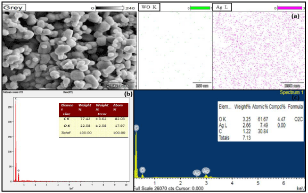
Figure 3: Energy dispersive spectroscopic result (a, b) Represents the
Ag2WO4; (c) CNT/Ag2WO4.
XRD analysis: The XRD patterns of CNT-Ag2WO4 Composite synthesized by Hydrothermal process coupled with Chemical vapour deposition method below Figure. The sharp and intensive peaks indicated a highly crystalline nanostructure of sample. The diffractive peaks at 20 of 38.18°, 44.25° and 64.72° could be attributed to the 111, 200, and 220 crystallographic planes of the face-centred spherical silver crystals, respectively. The obvious diffractive peaks with 20 at 23.1° and 34.1° corresponded to the 002 and 202 crystal planes of monoclinic phase of WO3 (JCPDS, No. 43-1035). The Crystalline peaks at 20 of 10.05° corresponding to the 001, crystallographic planes of the CNT (Figure 4).
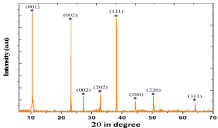
Figure 4: XRD pattern of Ag2WO4, CNT and Acidified Ag2WO4/CNT.
X-ray photoelectron spectroscopy (XPS) analysis
The chemical composition of the as-prepared composites and chemical status of elements was confirmed by XPS analysis. To compare the purity of the surface and the degree of oxidation, to gain vision into the shape evolution, and to unravel the formation mechanism of the samples. The spectrum shows Figure 6 exhibits that the CNT-Ag2WO4 composite consists of C, Ag, W and O elements. The corresponding high-resolution XPS spectra are provided in the Figure 5. The results show the presence of a large amount of carbon, The C 1s spectrum shows three deconvoluted peaks at 282.92, 284.68 and 286.10 eV could be indorsed to sp2 C-C, C-O and N-C-N bond in the composite, respectively. And the peaks of Ag, W, and O are clearly visible, indicating that the samples were highly pure. The core-level Binding Energies (BEs) of O 1 s, Ag 3 d, and W4f, which have been corrected for the surface charging effect, were determined from the respective XPS spectra. High-resolution Ag 3d, and W4f, O1 s, XPS spectra of the as-synthesized samples. An analysis of the XPS results shows a strong effect on both the Ag and W atoms. The Ag 3d peak is identified at 35.43 and 37.61eV in the spectra of the samples, respectively, which suggests the presence of metallic Ag 56, 57. To confirm the presence of metallic Ag from the XPS data, the asymmetric peaks observed in the Ag 3d core-level region. W-O distances corresponding to the 367.19 and 373.21 atoms remain almost unaltered, whereas the distance of the W-O bond corresponding to W 4f increases smoothly with the addition of electrons. These results show that during electron irradiation, electronic and structural disorder was introduced into the material¸ thus illustrating the fundamental role of cluster concepts in the formation and growth of Ag filaments. The high-resolution O 1s spectra could be fitted into three peaks at 530.6, 531.7 and 532.8 eV. The peak at 530.6 eV could be attributed to the oxygen in OH group or water species adsorbed on the composite. And the peaks with the banding energy of 531.7 and 532.8 eV could be assigned to the oxygen in Ag2WO4 and O-C, respectively.
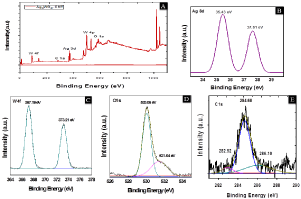
Figure 5: XPS pattern of A) Ag2WO4 - CNT survey spectrum of Nanocomposite;
B) Binding energy of Ag 3d; C) Binding energy of W 4f; D) Binding energy of
0 1s; E) Binding energy of C1s.
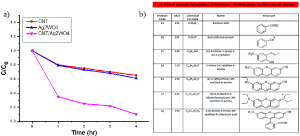
Figure 6: Photocatalytic effect of Rhodamine B by using CNT/Ag2WO4 nanocomposite.
And its Molecular intermediates.
Determination of photocatalytic effect of Rhodamine B by using CNT/Ag2WO4 nano-composite
The molecular intermediates help in figuring out the details of the Rhodamine B dye photocatalytic degradation process. Consecutive variations during the photo-oxidation of Rhodamine B were analytically executed by Liquid Chromatography-Mass Spectrometry (LC-MS). According to experimental results, the degraded molecules of these two dyes were mineralized to form CO2 and H2O, which hence proves, the results of the TOC measurement. N-deethylation and destruction of dye chromophore structure of Rhodamine B can be performed using natural sunlight. N-deethylation processes were headed by the formation of a nitrogen-centered radical while destruction of dye chromophore structures which is further paved by generation of a carbon-centered radical. The photogenerated active species such as •OH could directly attack the central carbon of Rhodamine B for degradation of the dye. These dynamic species work on any N-deethylation intermediates to prolong the deethylation process and turn adsorption of Rhodamine B on the CNT/Ag2WO4 photocatalysts shallow. Molecular intermediates of photocatalytic degradation of Rhodamine Busing CNT/Ag2WO4 are Benzoic acid (m/z=122), 4-methylbenzene-1,3-diol (m/z=124), Diphenylmethane (m/z=168), 2,6-dibromophenol (m/z=252), 2,4-dibromo-3hydroxy- 6-methylenecyclohexa-2,4-dienone (m/z=279), 2,4-dibromo- 6-methylbenzene-1,3-diol (m/z=281), bis (3,5-dibromophenyl) methane (m/z=483), 2,4-dibromo-6-(3-bromo-4-hydroxybenzyl) benzene-1,3-diol (m/z=531).
Photocatalytic Removal of heavy metals in industrial effluents using CNT/Ag2WO4
The industrial effluent was treated with CNT/Ag2WO4 heterostructure photocatalyst in the presence of daylight and the concentration was recorded before and after the treatment for the analysis of heavy metals below Figure. The industrial effluent treated with 0.75g/L-1, the nanoporous structure of CNT/Ag2WO3 is found to be optimum and with efficient removal of heavy metals concentration was recorded. The heavy metals such as Copper (Cu) and Chromium (Cr) were removed completely and were followed by gradual reduction of Lead (Pb), Zinc (Zn), and Iron (Fe) focused analytically (Figure 7).

Figure 7: Heavy metal concentrations before and after treatment in industrial
effluent by using CNT/Ag2WO3 heterostructure.
Here the industry effluent was prepared for varying pH conditions like 4, 7 and 10 by using pH monitoring reagent 0.1M HCl and 0.1M NaOH. And these effluents were treated with 0.5g of CNT/Ag2WO3. The process of degradation was higher in pH-4 (acidic condition) when related to pH-7 and 10 which was estimated due to surface charge on the heterostructure, which increases the degradation.
Determination of antibacterial activity of CNT/Ag2WO4 Nano-composite
CNT, Ag2WO4, CNT/Ag2WO4 were further tested for their potential to inhibit test bacterial pathogens by disc diffusion method (Fig 8). The results of antibacterial activity showed a significant zone of inhibition against test pathogens. It was noted that among the test samples, CNT/Ag2WO4 controllable composites showed maximum inhibition zone of 24.21, 23.10 and 19.17 for 461 MRS, in CNT/ Ag2WO4: 180o due its large surface area, only a trifling response to CNT/Ag2WO4nano-composite is observed, while there is no zone of inhibition in SDW (Sterile Distilled Water) diffused discs against test pathogens. Our study clearly suggests that CNT/Ag2WO4 nanocomposite inhibit bacterial pathogens by rupturing the outer and inner wall of the cell which leads to disorganization and leakage of the cell membrane.
The results of antibacterial activity were presented in the above Figure 8. It suppresses the growth of pathogenic bacteria. MTT assay will give results variation, our synthesized CNT/Ag2WO4 was very useful in inhibiting the 450 MRSA-CNT alone have 12.5μg/ml & CNT/Ag2WO4 have 0.8μg/ml. and the results were comparable with that standards (penicillin-streptomycin) drug which would most effectively inhibited the growth of bacteria according to several studies.

Figure 8: The results of anti-bacterial activity, Microbial inhibition Concentration (MIC) of CNT/Ag2WO4 nano-composite, bacterial species 450; Abbreviation as
follows: S: Sensitive; R: Resistance; Standard drug value for the antibacterial test which was performed.
Anti-oxidant activity of synthesized CNT-Ag2WO
The antioxidant activity of synthesized CNT-Ag2WO4 was evaluated by DPPH radical scavenging assay using 0.04μg/ml CNTAg 2WO4 synthesized particle of 20.40, 60, 80, 100 μg/ml respectively. Ascorbic acid was used as standard. The results obtained are potted in the below figure. Over finding reveals that the synthesized CNTAg 2WO4 possed free radical scavenging activity as we observed significantly shift in the DPPH radical scavenging ability for studied sample. The scavenging ability for the lowest concentration of the synthesized CNT was about 27% and this scavenging ability was increased to 75%. However, the scavenging ability was recorded for Ag2WO4 as a lowest concentration is 31.8% and when concentration was increased the scavenging ability was 75.45% with composite (CNT-Ag2WO4) got an lower concentration of 13%, and increased to 75.45%, the attempt was aimed to study the potentiality of nanoparticles for its antioxidant activity (Figure 9).
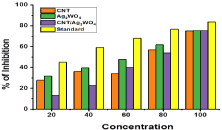
Figure 9: Anti-oxidant activity of synthesized CNT, Ag2WO4, CNT-Ag2WO4
(Standard-Ascorbic acid).
Conclusion
In the present work, various modifications were applied for the synthesis CNT/Ag2WO4 Nano-composite have been prepared by a simple eco-friendly hydrothermal and cost-effective CVD method for various applications. Moreover, the CNT/Ag2WO4 were recycled many a times without any observable loss of photocatalytic activity, and this experimental findings indicate the strong possibility of heterostructure material for Rhodamine-B dye photocatalytic degradation with molecular intermediates and Copper (Cu), Chromium (Cr), Lead (Pb), Zinc (Zn), Iron (Fe) heavy metal removal, The orchestrated materials were screened Antibacterial action on Methicillin-safe Staphylococcus aureus (MRSA,461); and specially for multi-tasking life based applications. At long last, the integrated metal oxides composite have generally excellent with eco-accommodating name and composite material size make a change in Anti-mitotic potential, size circulation gives out cytotoxic effect of drug on various cell line, and state of CNT/Ag2WO4 are the significant parameters impacting on it, a moderate results with antioxidant activity and biodissemination in bio-dispersion in-vitro applications.
Acknowledgment
Akshatha G, University of Mysore, the financial assistance through-Institution of Excellence (UOM/IOE/692/2019-20), University Grants Commission-University of Potential Excellence/ Center for Potential Excellence in Particular area (UGC-UPE/ CPEPA) Fellowship to carry out the research work.
References
- Yaqoob AA, Parveen T, Umar K, Ibrahim MNM. “Role of Nanomaterials in the Treatment of Wastewater: A Review”. Water. 2020; 12: 495.
- Fanourakis SK, Pena-Bahamonde J, Bandara PC, Rodrigues DF. “Nano based adsorbent and photocatalyst use for pharmaceutical contaminant removal during indirect potable water reuse”. npj Clean Water. 2020; 3.
- Butt BZ. Nanotechnology and Waste Water Treatment. In: Javad S. (eds) Nanoagronomy. Springer, Cham. 2020: 153-177.
- Amin MT, Alazba AA, Manzoor U. “A Review of Removal of Pollutants from Water/Wastewater Using Different Types of Nanomaterials”. Advances in Materials Science and Engineering. 2014; 2014: 825910.
- Anjum M, Miandad R, Waqas M, Gehany F, Barakat MA. “Remediation of wastewater using various nanomaterials”. Arabian Journal of Chemistry. 2019; 12: 4897-4919.
- Nobre FH, Bastos IS. Raquel Oliveira dos Santos Fontenelle, Edgar Alves Araújo Júnior, et al. “Antimicrobial properties of a-Ag2WO4 rod-like microcrystals synthesized by sonochemistry and sonochemistry followed by hydrothermal conventional method”. Ultrasonics Sonochemistry. 2019; 58: 104620.
- de Foggi CC, de Oliveira RC, Fabbro MT, Vergani CE, Andres J, Longo E, et al. “Tuning the Morphological, Optical, and Antimicrobial Properties of a-Ag2WO4 Microcrystals Using Dierent Solvents”. American Chemical Society. 2017; 17.
- Chithra PG, Vijayalekshmi V. “Synthesis characterization and application of nano dimensional silver tungstate”. IJARSE. 2015; 4.
- Song QW, Yu B, Li XD, Ma R, Diao ZF, Li RG, et al. “Efcient chemical fixation of CO2 promoted by a bifunctionalAg2WO4/Ph3P system”. RSC Green Chem. 2014; 16: 1633-1638.
- Assis M, Robeldo T, Foggi CC, Kubo AM, Mínguez-Vega G, Condoncillo E, et al. “Ag Nanoparticles/a-Ag2WO4 Composite Formed by electron Beam and Femtosecond Irradiation as potent Antifungal and Antitumor Agents”. Scientific Reports. 2019; 9: 9927.
- Bernardo MP, Moreira FKV, Mattoso LHC, Raja S. “Innovations in Antimicrobial Engineered Nanomaterials”. Springer Nature Advanced Nanostructured Materials for Environmental Remediation. 2019: 253-277.
- Thostenson ET, Ren ZF, Chou TW. “Advances in the science and technology of carbon nanotubes and their composites: a review”. Compos Sci Technol. 2001; 61: 1899-1912.
- Hu Y, Shenderova OA, Hu Z, Padgett CW, Brenner DW. “Carbon nanostructures for advanced composites”. Rep Prog Phys. 2006; 69: 1847- 1895.
- Lin Y, Taylor S, Li H, Shiral Fernando KA, Qu L, Wang W, et al. “Advances toward bioapplications of carbon nanotubes”. J Mater Chem. 2004; 14: 527- 541.
- Moniruzzaman M, Winey KI. “Polymer composites containing carbon nanotubes”. Macromolecules. 2006; 39: 5194-5205.
- Maa C, Tangb BZ, Kima JK. “Effect of CNT decoration with silver nanoparticles on electrical conductivity of CNT-polymer composites”. Carbon. 2008; 46: 1497-1505.
- Kumara A, Dalala J, Dahiyaa S, Puniaa R, Sharmac KD, Ohlana A, et al. “In situ decoration of silver nanoparticles on single-walled carbon nanotubes by microwave irradiation for enhanced and durable anti-bacterial finishing on cotton fabric”. Ceramics International. 2019; 14: 1011-1019.
- Kassem A, Ayoub GM, Malaeb L. “Antibacterial activity of chitosan nanocomposites and carbon nanotubes: A review”. Science of the Total Environment. 2019; 668: 566-576.
- Satyanarayana M, Goud KY, Reddy KK, Kumar VS, Gobi KV. “Silver Nanoparticles Impregnated Chitosan Layered Carbon Nanotube as Sensor Interface for Electrochemical Detection of Clopidogrel in vitro”. Materials Science & Engineering: C. 2019; 101: 103-110.
- Niu A, Han Y, Wu J, Yu N, Xu Q. “Synthesis of One-Dimensional Carbon Nanomaterials Wrapped by Silver Nanoparticles and Their Antibacterial Behavior”. J Phys Chem C. 2010; 114.
- Castle AB, Gracia-Espino E, Nieto-Delgado C, Terrones H, Terrones M, Hussain S. “Hydroxyl-functionalized and N-doped multiwalled carbon nanotubes decorated with silver nanoparticles preserve cellular function”. ACS Nano. 2011; 5: 2458-2466.
- Dinh NX, Quy NV, Huy TQ, Le AT. “Decoration of Silver Nanoparticles on Multiwalled Carbon Nanotubes: Antibacterial Mechanism and Ultrastructural Analysis”. Journal of Nanomaterials. 2015: 814379.
- Advanced Nanostructured Materials for Environmental Remediation. Springer Science and Business Media LLC. 2019.
- Lombardo PC, Poli AL, Castro LF, Perussi JR, Schmitt CC. “Photochemical Deposition of Silver Nanoparticles on Clays and Exploring Their Antibacterial Activity”. ACS Applied Materials & Interfaces. 2016.
- Oluwalowo A, Nguyen N, Zhang S, Park JG, Liang R. “Electrical and Thermal Conductivity Improvement of Carbon Nanotube and Silver Composites”. Carbon. 2019; 146: 224-231.
- Khashan KS, Sulaiman GM, Mahdi R. “Preparation of iron oxide nanoparticles-decorated carbon nanotube using laser ablation in liquid and their antimicrobial activity”. Artificial Cells, Nanomedicine and Biotechnology. 2017; 45: 1699-1709.
- Kharat SN, Mendhulkar VD. “Synthesis, characterization and studies on antioxidant activity of silver nanoparticles using Elephantopusscaber leaf extract”. Materials Science and Engineering. 2016; 62: 719-724.
- Ramesh AM, Gangadhar A, Chikkamadaiah M, Krishnegowda J, Shivanna S. “Synthesis of graphene nanosheets by emitted black carbon and its sustainable applications”. Journal of Environmental Chemical Engineering. 2020; 8: 104071.
- Srikantaswamy S, Jagadish K, Abhilash Mavinakere RA, Akshatha G. “Fe-Ni nanoparticle catalyzed controlled synthesis of multiwalled carbon nanotube on CaCO3”. Indian journal of engineering & materials science. 2020; 27: 1104-1111.